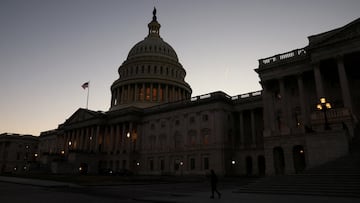What happens if the US reaches its debt ceiling on Thursday? What happened last time?
A stark warning from Treasury Secretary Janet Yellen has outlined the risk of a first-ever US debt default.

Earlier this week Treasury Secretary Janet Yellen informed Congress that the United States is on track to reach its statutory debt limit next Thursday, bringing the prospect of a disastrous default into sharp focus.
“Failure to meet the government’s obligations would cause irreparable harm to the US economy, the livelihoods of all Americans, and global financial stability,” she warned.
“I respectfully urge Congress to act promptly to protect the full faith and credit of the United States.”
For now, the Treasury will enact a number of “extraordinary measures” in order to satisfy the country’s ongoing financial obligations. The US can raise enough money from cash reserves and accountancy tricks to last beyond Thursday, but those powers are not infinite.
Yellen’s estimates that the measures could delay a default until early June, but the US risks breaching the debt ceiling and suffering a hugely harmful default unless the ceiling is raised by Congress. Even without a historic default, reaching the debt ceiling can have damaging economic consequences.
The US has never previously defaulted on its debt but tense situations where it approaches the statutory limit have become increasingly common.
When was the last time the US hit the debt ceiling?
The 2011 debt ceiling crisis outlined what can happen if the US is allowed to reach the debt ceiling, even if a full default is avoided. Worryingly, 2011 shared a number of key factors with the situation in Washington DC today.
In the midterms of the first term of the Obama administration the GOP took control the House of Representatives, disrupting the Democrat’s unified control in Washington. President Obama had enacted some expensive social programs that had drawn the ire from Republicans, who argued that he had pushed the national debt too far.
As the country approached the debt ceiling, the Republican-led House initially refused to approve legislation that would allow Obama to raise the debt limit. The debt ceiling was breached and on 31 July the Treasury estimated that the US was just two days from a full default.
With financial catastrophe on the horizon, House Republicans eventually agreed to approve a raising of the debt ceiling in exchange for a raft of future spending cuts. Crisis was averted but the Bipartisan Policy Centre went on to estimate that the stalemate had served to increase borrowing costs by $18.9 billion.
The 2011 debt ceiling crisis came at a point when the Republicans controlled the House and the Democrats the Senate and White House, as is the case today. However there is one key difference between then and today, one that could make the prospect of a long stand-off even more likely.
The level of partisan sentiment in Washington has only grown in the intervening 12 years and, on the issue of government spending in particular, divides between the two parties are keenly felt.
It is expected that an agreement will be found and the US will avoid a historic first-ever default, but it remains to be seen how much damage months of uncertainty will cause to the country’s vulnerable economy.






